Hummingbirds are fascinating little birds that are loved by most gardeners. Their small size, remarkable ability to hover, and jewel-like colors make them welcome visitors to any garden. Not only are they beautiful, but they assist with the pollination of many plants. Their bright presence in gardens is sorely missed when they migrate. But, when do hummingbirds migrate?
Hummingbirds migrate north for the summer and south for the winter. The southerly migration takes place in late summer and early fall – usually mid-July to September. The northern migration takes place between February and May. The exact timing is species and climate-dependent.
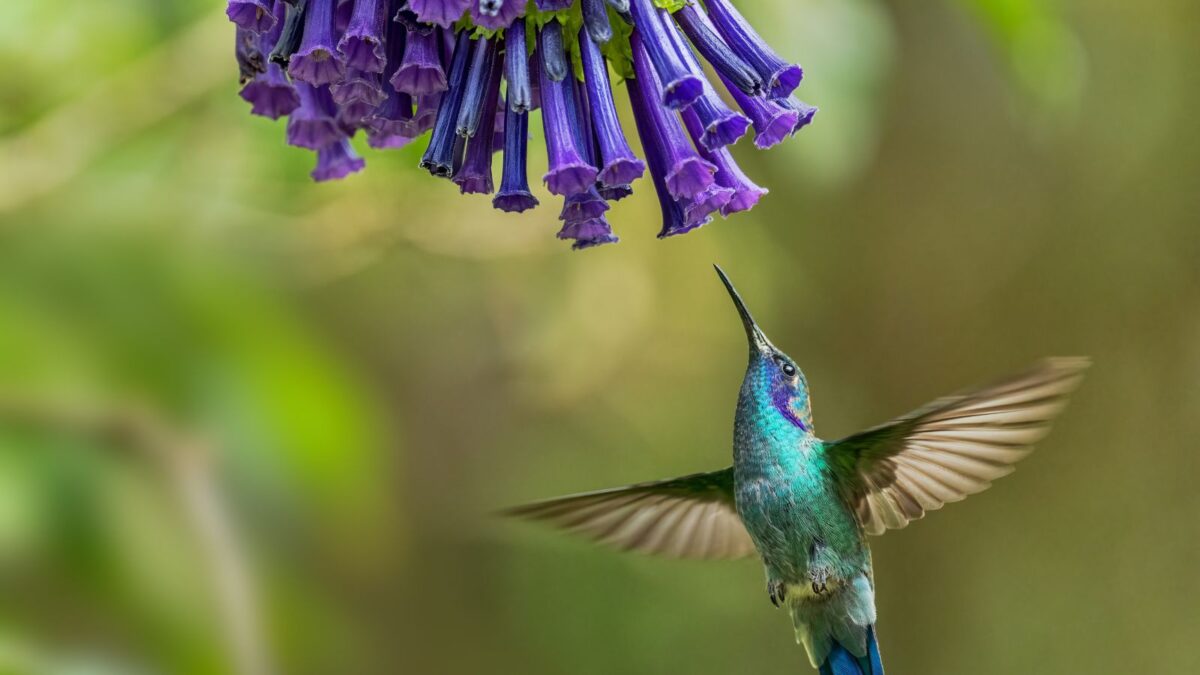
The seasonal migration of hummingbirds gave rise to the Mayan legend that hummingbirds are magical beings. They believed that the Sun disguised himself every year as a hummingbird to woo the beautiful Moon.
What Are Hummingbirds?
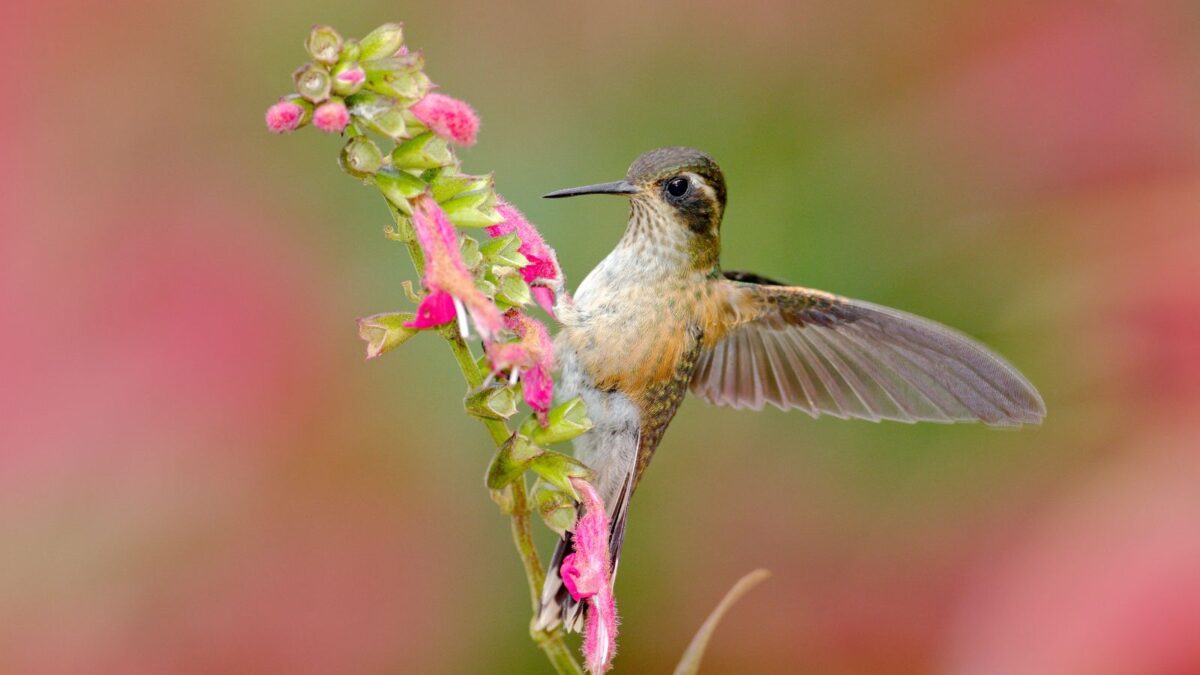
Hummingbirds are some of the most fascinating creatures in the world. They are tiny birds, measuring only 3-5 inches in length, and yet they are capable of flying at speeds of up to 60 miles per hour. Hummingbirds are also known for their unique feeding habits. They hover in mid-air as they sip nectar from flowers, using their long beaks to reach deep into the petals.
In addition to nectar, hummingbirds also eat small insects, which they capture in mid-flight. Thanks to their impressive flying abilities and their beautiful iridescent feathers, hummingbirds are a popular subject of birdwatching and photography. This is why many gardeners want to learn more about their migration patterns. Let’s explore.
Why do hummingbirds migrate?
Many hummingbirds migrate each year, traveling long distances in search of warmer temperatures and more plentiful food sources. While the reasons for their migration are not fully understood, experts believe that hummingbirds are driven by a combination of instinct and necessity.
On the one hand, hummingbirds may rely on innate migratory behaviors to guide them on their journeys. Hummingbirds have evolved specialized physical characteristics that help them to survive during long periods without food or water. These traits include rapid heartbeat rates and extremely efficient metabolism rates, both of which allow hummingbirds to quickly lose excess body heat in order to cool down in warmer climates.
At the same time, hummingbirds also migrate for more practical reasons. Over time, hummingbird populations have found that certain locations offer ideal growing conditions for the plants they feed on, making it easier to find enough food during different times of the year.
In addition, some hummingbird species avoid harsh winters by flying south where temperatures tend to be milder throughout the year. Thus, there is no single factor driving hummingbird migration; instead, a complex set of instincts and pressures shapes these incredible birds’ annual journeys.
Types of hummingbirds and migration
The type of hummingbird will also impact when and where it migrates. If you know the species of hummingbird you get in your area, this will help you track their migration seasons and know when you can expect them to return to your area.
They will usually fly during the day and sleep at night. However, when Ruby-throated hummingbirds fly over the Gulf of Mexico, they have to fly straight through because there is nowhere to stop and rest. They fly low over the water and very fast, making good time to get to the other side.
In Which Month Do Hummingbirds Migrate South?
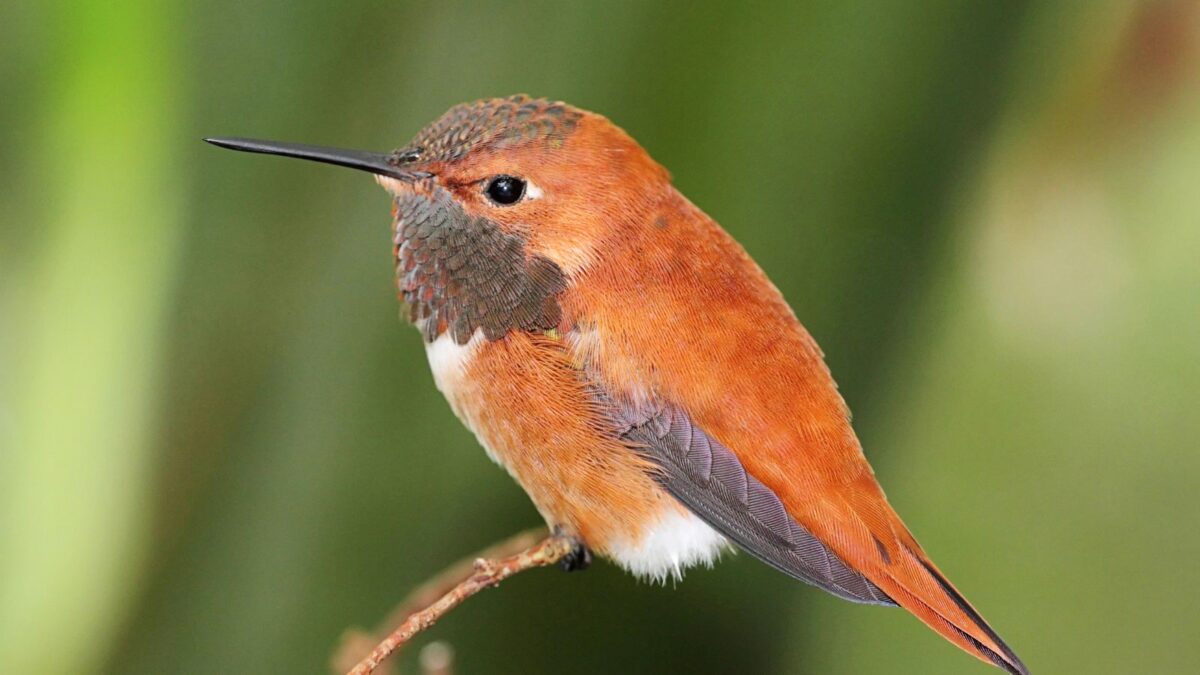
Hummingbirds usually migrate in late summer or early fall when their breeding cycle is completed. This can vary according to the type of hummingbird, the climate, and the distance from the equator.
The Ruby-throated (Archilocus colubris) is a hummingbird with breeding grounds extending from the southern United States into the southern provinces of Canada. Birds in Canada usually begin their migration in August as they have further to fly. Birds in the southern US only migrate in late September or October.
Rufous hummingbirds that nest in Alaska and the Pacific Northwest begin their southerly route in July. They follow the Rocky Mountains and gardeners in these areas commonly see these little birds during fall as they make their way to the wintering grounds.
When Do Hummingbirds Migrate North?
The arrival of hummingbirds for spring and summer is eagerly awaited by bird-watchers. Some hummingbirds, such as the Ruby-throated, may be seen in the southern United States as early as January or February. The male hummingbirds are usually the first to arrive for the breeding season.
Broad-tailed hummingbirds (Broad-tailed Selasphorus platycercus) have a diverse range of breeding grounds. They arrive in southern Arizona by late February. Those going as far north as Southern Montana only arrive late in May.
Do All Hummingbirds Migrate?
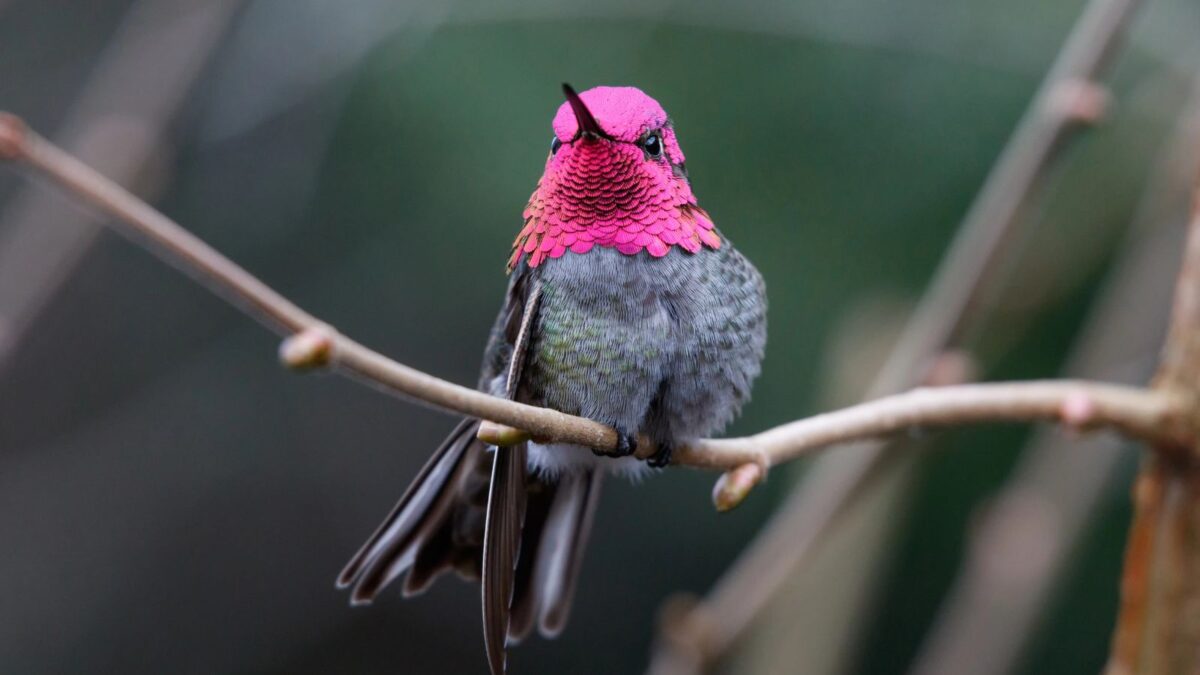
The only hummingbird that does not migrate from the United States is Anna’s Hummingbird (Calypte anna). This hummingbird is found along the Pacific coast from Vancouver to southern Arizona.
They are hardy birds that manage to survive freezing winters through a remarkable body adaptation. They convert sugar to fat during the winter daylight hours. In cases where they have low body fat levels or poor feather condition, the hummingbirds enter a state of torpor. This is achieved by lowering their metabolic rate and is similar to animals that hibernate.
Hummingbirds in torpor may look as if they are dead. They sometimes hang from branches and wires and may look as if they have frozen to death. Do not disturb these birds, as they will revive once spring arrives.
Some non-migratory hummingbirds stay year-round in South America, Central America, and Mexico.
How Does the Weather Affect Hummingbird Migration?
Hummingbirds may change their migratory pattern if there are extreme weather conditions. Sudden cold snaps, hurricanes, intense storms, or heat waves can all affect the timing of hummingbird migration.
There is concern that global warming is affecting the hummingbird migration patterns, which in turn is affecting the pollination of plants.
How Do Hummingbirds Manage to Fly So Far?
Hummingbirds’ biological cycle prompts them to feed intensively towards late summer. This is known as hyperphagia and allows the birds to increase their body weight by twenty-five to forty percent. The fat is metabolized and released as energy for the hummingbirds during the long migratory flights.
Hummingbirds fly low to the ground as they migrate, allowing them to find food sources along the way. Many people choose to put up hummingbird feeders to assist these tiny, winged travelers.
Hummingbirds make use of their small body weight and catch tailwinds that help propel them forwards as a way of conserving energy. They seldom fly into a strong wind and seek shelter to rest until the wind has died down.
Hummingbirds fly on their migratory paths from mid-morning to early evening. The daylight hours allow them to find flowers and feeders for food. Here are the most popular plants that attract hummers:
- red flowers that attract hummingbirds
- purple flowers hummers love
- perennial flowers you should plant to attract hummingbirds
In addition, the warmth of the day results in updraughts from the ground, which help the birds keep aloft with minimal energy expenditure.
Do Hummingbirds Migrate in Flocks?
Geese, swallows, ducks, puffins, pelicans, and starlings are some birds that migrate in flocks. Hummingbirds do not follow this trend, and they prefer to migrate as individuals.
Hummingbirds sometimes collect in one area, such as the northern coast of the Gulf of Mexico. The birds rest and feed in preparation for the long flight over the Gulf of Mexico. Although the hummingbirds congregate in one area, they fly as individuals with no flock formation.
Mature male hummingbirds are usually the first to migrate in both the northern and southern migration. It is believed they do this to claim the best feeding and nesting sites.
Do Hummingbirds Come Back to The Same Area Every Year?
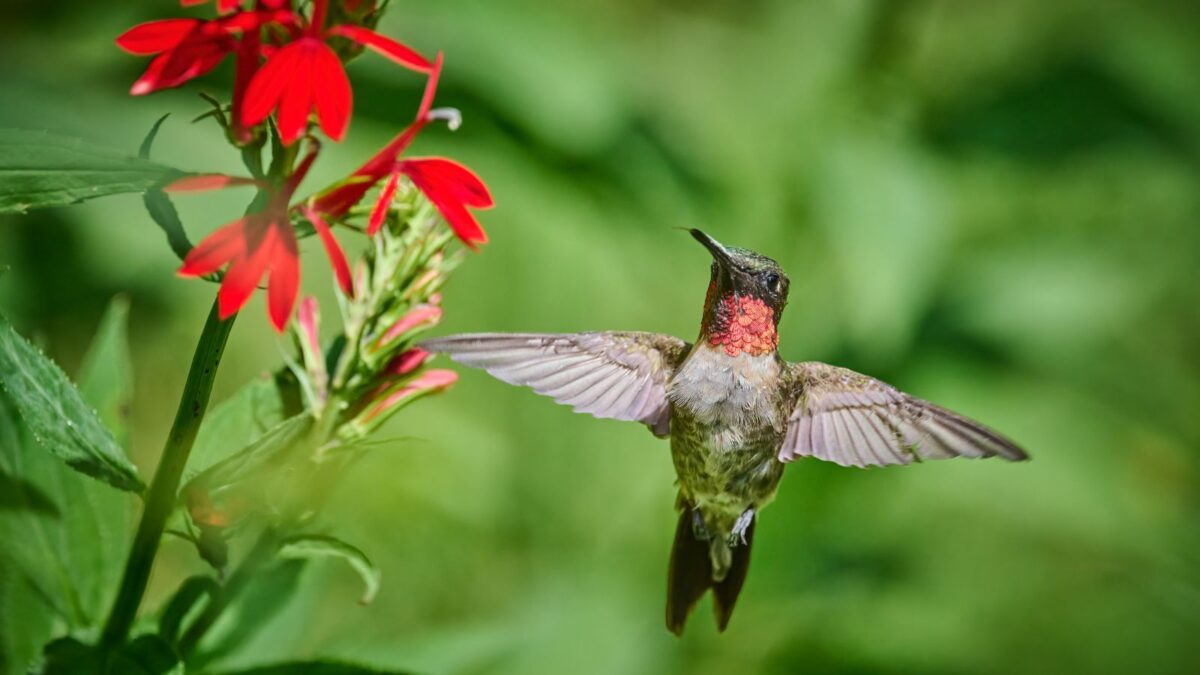
Hummingbirds can remember and mark food sources and sites. This allows them to travel efficiently and to choose nesting sites close to reliable food sites. The result is that although the migration route may differ slightly, the hummingbirds generally return to the same area every year.
If you are an avid hummingbird enthusiast, you should see hummingbirds returning to your feeder every year if the feeder is well supplied.
Add some of these hummingbird feeders in preparation for their arrival:
- glass hummingbird feeders
- grateful gnome hummingbird feeders (these are absolutely gorgeous!)
How Do Hummingbirds Know When to Migrate?
Hummingbirds use a variety of factors to trigger the need to migrate. These can include:
- The availability of food is essential. As summer begins to end and flowers become scarce, the hummingbird’s food resources are also limited. This prompts the hummingbird to start preparing for migration.
- The angle of the solar rays is another trigger for migration.
- Falling or rising temperatures are registered by the hummingbirds. As a result, they begin their journey to overwinter in warmer climates or fly north to breed.
How Can You Help Migrating Hummingbirds?
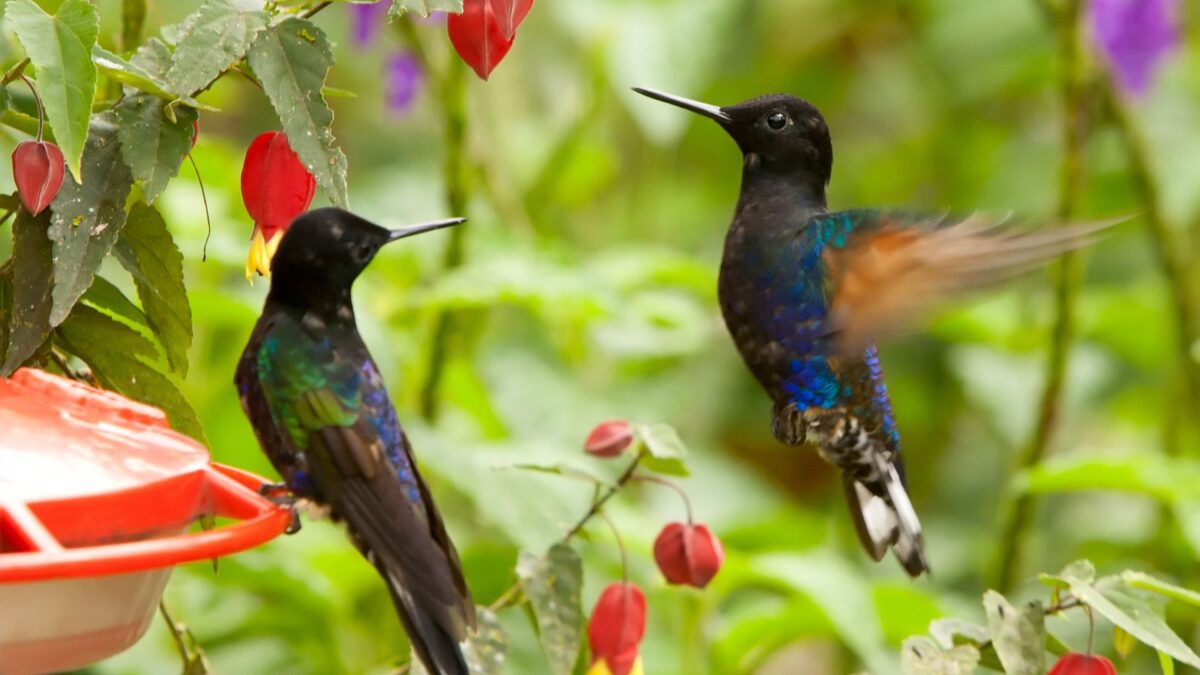
While hummingbird movement is largely driven by their biology, there are also steps that we can take to support these magnificent creatures during their migration. For example, one way to help hummingbirds is to plant flowering plants in your garden that will attract these birds as they make their long journey south.
Another great way to help hummingbirds is simply to provide a source of clean water that they can drink from throughout their travels. Check the water regularly to be sure it’s fresh and not contaminated. You can also plant flowers that they feed on and keep your lawn and garden as natural as possible. Native plants are part of a healthy habitat for hummingbirds.
Additionally, it’s a good idea to hang or place out feeders in locations where your hummingbirds are likely to be passing through. This will help to ensure that hummingbirds always have a reliable food source, even if they can’t find any flowers or plants in the area.
Finally, you can also plant bushes and flowers that hummingbirds are likely to visit for food, such as bee balm, cardinal flower, and hummingbird sage. With these simple steps, you can help hummingbirds get safely on their way each year.
After all, it’s a tough world out there for hummingbirds – so let’s make sure we do whatever we can to give them a helping hand!
Quick Tips for Migrating Hummers
Hummingbirds migrate south to warmer areas in late summer and fall. They have a northern migration during late winter and early spring. Hummingbirds that migrate great distances often arrive at their nesting destination in early summer. Species, prevailing weather, and traveling distance affect migratory patterns.
If you want to help migrating hummingbirds, you should first learn more about the types of hummingbirds in your area, then you can learn more about their migratory patterns. There are even interactive maps online that can show you up-to-date data on where the birds are and in which direction they are moving.
Do you currently track the migration of hummingbirds in your area?
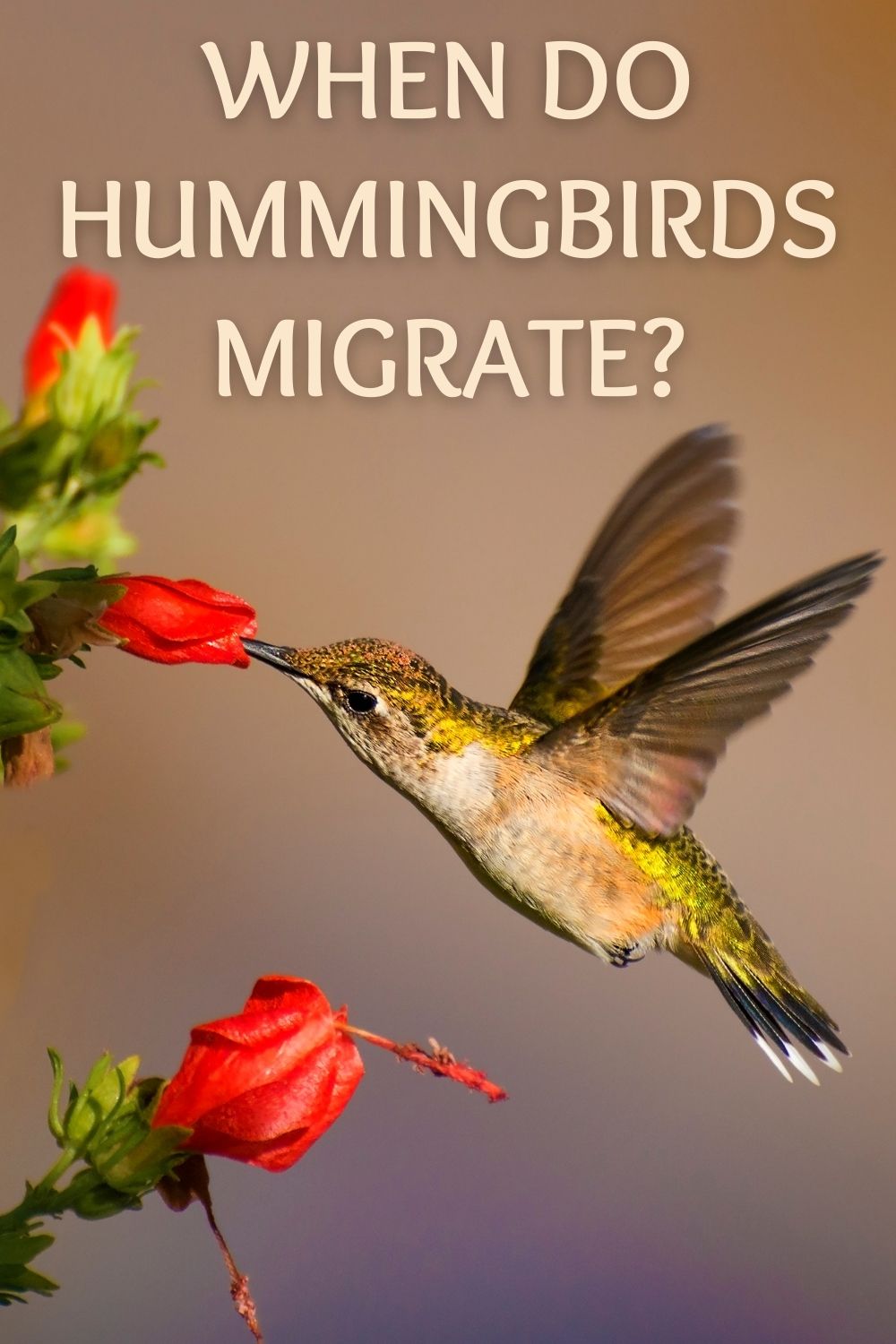

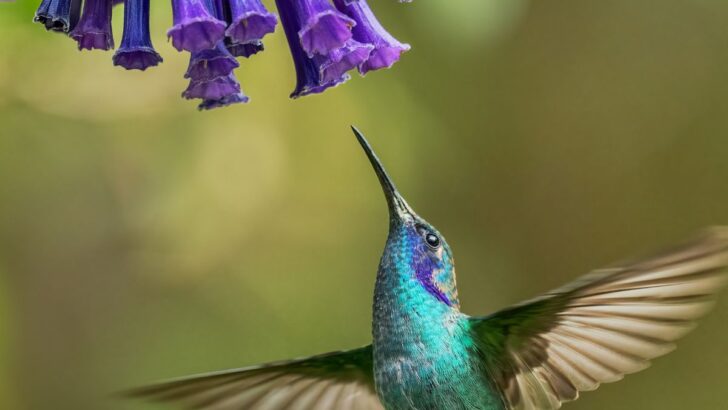



Janet
Tuesday 20th of September 2022
It is September 20th and I still am seeing a hummingbird hang around in my backyard here in Montreal, Canada. Shouldn’t that hummingbird have left by now?
Adriana
Thursday 22nd of September 2022
I have one too. they came late this year, and maybe they are taking a little extra time to leave. and it's still warm here. Just make sure you have food out for them, as they'll need it before their travels.
What Do Hummingbirds Eat? A Quick And Easy Guide To Feeding Hummers
Friday 13th of May 2022
[…] when do hummingbirds migrate? […]